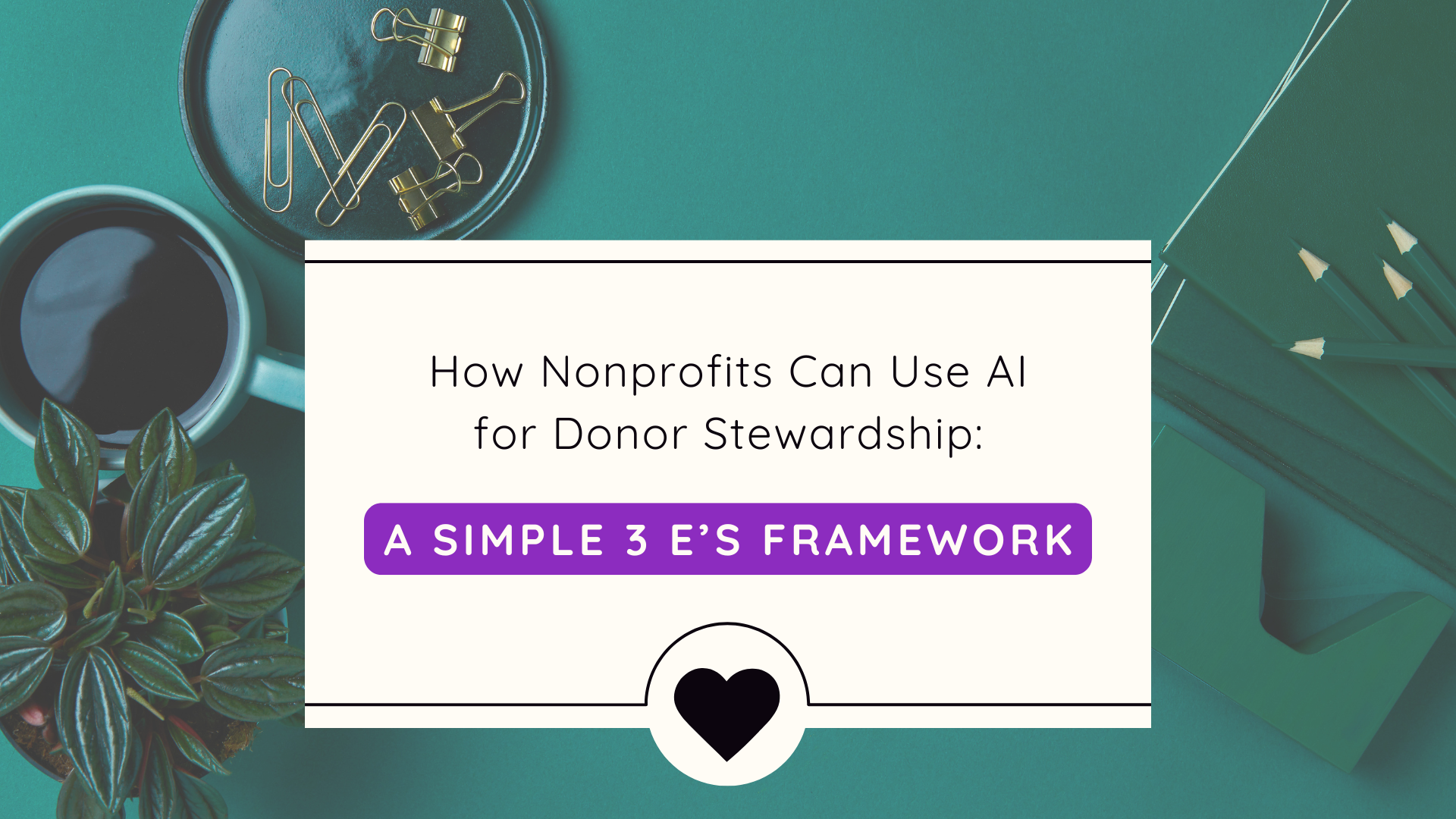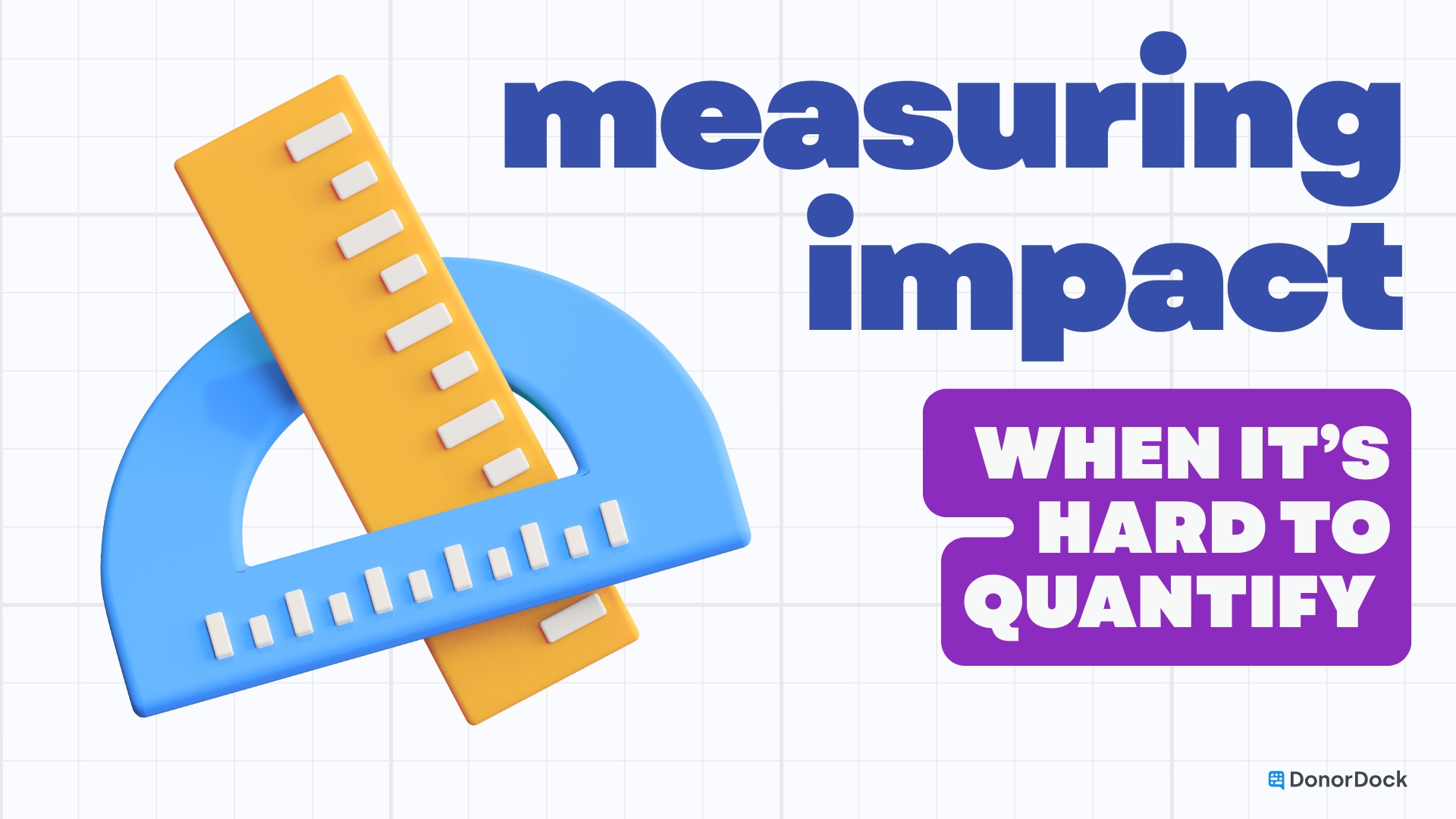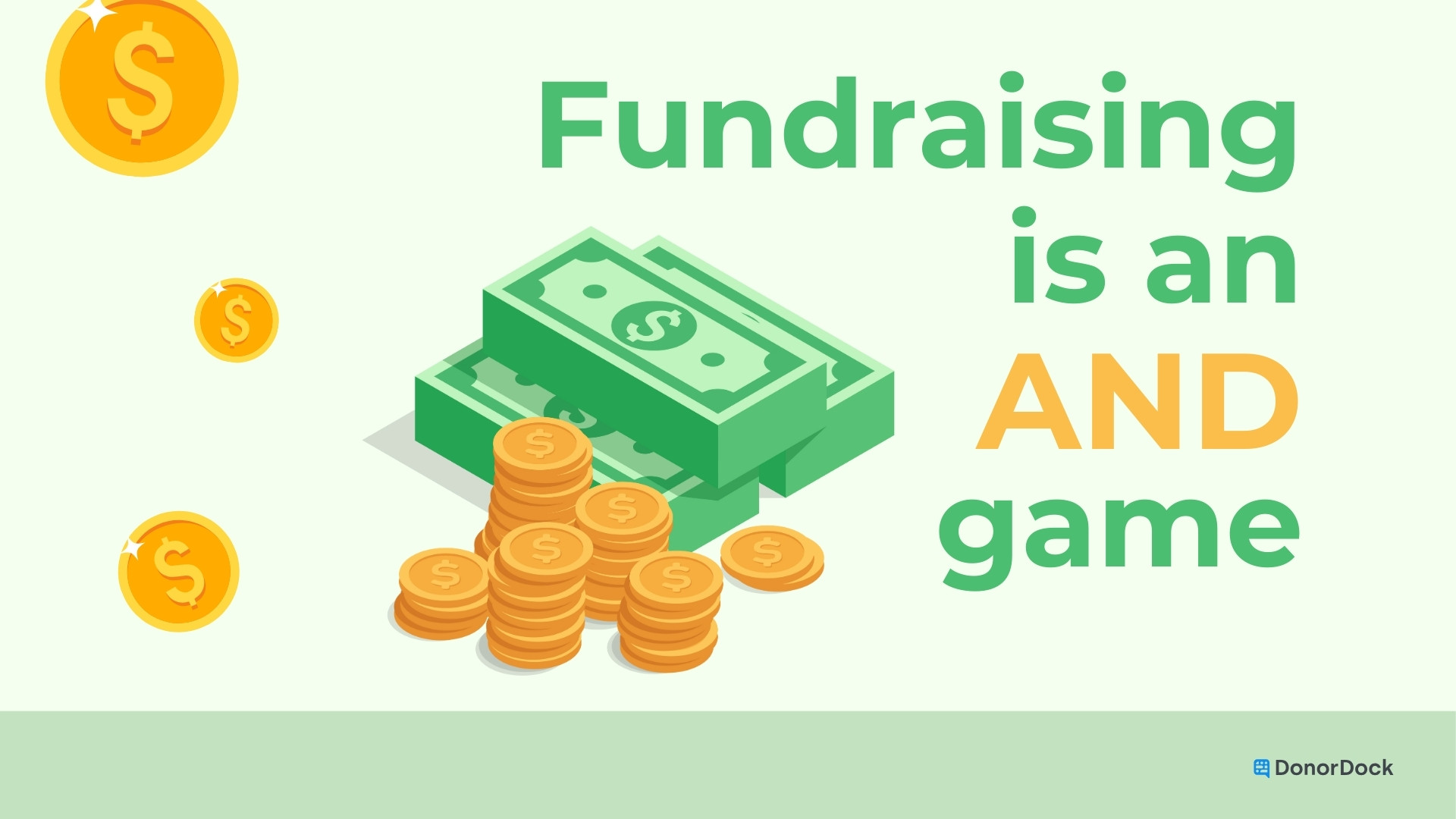Ever felt like you're on the brink of something big, but not quite sure how to leap? Picture yourself at the brink of a precipice, gazing down into the depths beneath. You know that diving in could be life-changing.
You've seen others make their splash, launching nonprofits that ripple out change. But how do they start? What's their secret sauce for funding?
This journey isn't just about starting; it's about fueling a mission that lasts. Ready to craft your strategic plan and connect with donors who believe in your cause as much as you do?
Let’s dive in deep - we’ll look at the important questions to ask yourself before getting started, the importance of building relationships, and a few free tools available for nonprofits!
Table of Contents:
- Key questions to ask before starting
- Strategic planning basics
- The importance of relationships
- Tools for nonprofits
- Conclusion
- FAQs
Key questions to ask before you start a nonprofit
So, you’ve got an amazing idea, and you’re ready to start a nonprofit! But before you get started, there are a few questions you need to ask yourself. According to Tiffany Allen from Boss on a Budget, these 4 questions are crucial to starting your nonprofit off on the right foot.
Is there a need?
Assessing the needs of your community is the first step to starting a nonprofit. Just like you wouldn’t set up a surf shop in the middle of North Dakota, it doesn’t matter how great of an idea you have if the solution doesn’t fit an actual need in your community. It’s important to do the work ahead of time to assess if your nonprofit is the right fit.
Start with conversations—lots of them. Chat with locals and survey potential beneficiaries. Look for organizations doing similar work within your community or find nonprofits serving similar constituents in other communities.
It’s important to understand how your nonprofit will fill gaps that are missing within the community. You also need to demonstrate that the solution you are presenting is helpful to beneficiaries.
“Sometimes the motivation for people to start is because they want to do something good. They want to help someone. But your idea of helping someone may not even be a need in your community. And a lot of times there are organizations that are already doing that kind of work.”
-Tiffany Allen on Beyond the Donation episode 25
Why am I starting this?
So why do folks roll up their sleeves and dive into starting nonprofits? For some, it's personal—a cause close to their heart turns into action stations. Others might see gaps in services that they just can't ignore because they know someone has got to step up.
When starting a nonprofit, the next question you need to ask yourself is “Why am I starting this?”
Are you starting a nonprofit to address the needs of others, or are you hoping to satisfy something in you? Here’s the hard truth, if your motivation is to fulfill your own desire or dream, then starting a nonprofit might not be the best solution. Often other organizations are already doing good work in your community. Serving at one of these already-established nonprofits or donating might be a better fit.
“You have to be loyal to the mission, not to your own feelings, not to your own dreams.”
-Tiffany Allen on Beyond the Donation Ep. 25
Building a successful nonprofit isn't just about pursuing your own vision; it's about responding to the needs of the community you serve. Many founders find it challenging to give up control, feeling a strong attachment to their initial idea. Ultimately, it's about putting the needs of the community first and letting the organization fulfill its purpose in the way that best serves them.
“Is this only about me, or is it really to help someone else? It could be a dream of yours to help people, and you can still launch successfully, but it can't be the main reason why you're starting.”
-Tiffany Allen on Beyond the Donation Ep. 25
Ok, if you’re still reading that means you’ve asked yourself the hard question of why you’re doing this. So let’s get into HOW you’ll do it.
How will I make money?
Let's dive into a question that often gets overlooked but is super important: "How will I make money?" This is a biggie, especially for nonprofits. Sometimes there's this misconception that money just magically appears for doing good work. But the reality is, to keep the lights on and the impact going, you need financial resources.
“When people start, they think, ‘Oh, I'll just pay for things out of pocket’ or grants will just magically come. And that's just not the case.”
-Tiffany Allen on Beyond the Donation Ep. 25

You've got to get real about where your cash flow is coming from. What are the different ways we can bring in funds? Maybe it's through donations, sponsorships, or fundraising events. The key is to explore multiple avenues and find what works best for your organization.
So, don't shy away from the money talk. Embrace it, strategize around it, and ensure that your mission can thrive for the long haul. Because let's face it, making a difference takes resources, and it’s up to you to make sure they’re there.
If you're looking for a place to start here are a few prompts you can ask Steward, an AI assistant designed for nonprofit leaders:
- Help me create a fundraising strategy
- Create a strategy for my nonprofit
Add more specifics about your nonprofit into your prompt or with follow-up questions to help tailor Steward’s answers to be the most impactful for you.
Who are my people?
Now, let's think about another crucial piece of the puzzle: Who's going to be on this journey with you? Whether it's your board members or the volunteers who'll be by your side?
Building a team is like assembling your dream squad. These are the folks who share your passion and bring their own expertise to the table. They're the ones who'll help you navigate the highs and lows, brainstorm ideas, and keep the momentum going.

So, take some time to think about who you want on your team. Look for people who believe in your mission and are ready to roll up their sleeves. And remember, diversity in skills and perspectives can only strengthen your cause. But it’s important to not enter this work on your own. Together, there's no limit to what you can achieve.
“And then who's going to do it with me? Who are my people? Who's on my board or who are the volunteers that are going to help me launch this thing? Because you cannot do this alone.”
-Tiffany Allen on Beyond the Donation Ep. 25
So, you’ve asked yourself these important questions, and you still feel strongly that starting a nonprofit is the right choice for you. Now what?
Strategic Planning for Nonprofits
Imagine going on a road trip without a map. You might hit some scenic spots, but you'll likely end up lost. That's where strategic planning comes in—it's your nonprofit’s roadmap to success.
Crafting a Strategic Plan
A well-crafted strategic plan is like the GPS for your nonprofit. Navigate your way through the ups and downs while staying on track to reach your desired destination. Start by defining clear objectives that resonate with what you're passionate about achieving. Then, break down these big dreams into achievable steps; think of milestones over months or years.
This isn't just busy work—organizations with robust plans are more apt to thrive because they know where they're headed and how to get there. Plus, with a clear roadmap, it is easier to get potential donors to come along for the ride. Donors with a full picture of the journey ahead can better assess if your nonprofit work is something they can get behind.
Budgeting Basics
Now let's talk money—but don’t yawn yet. Effective budgeting can be as thrilling as finding treasure if it means reaching those starry-eyed aspirations of yours. First off, transparency is key; make sure every dollar has its place and purpose known to all stakeholders involved.
You’ll want to anticipate both the sprint and marathon expenses: from quick wins that boost morale to long-term investments that secure stability. Remember, fiscal responsibility isn’t just about cutting costs—it’s about making smart choices today so your organization can stand tall tomorrow.
As a nonprofit, it’s important to understand the basics of fund accounting. Fund accounting helps you accurately track how donations are being spent, which can help your nonprofit tell a more compelling story to donors.
Building relationships as the foundation for your nonprofit
Starting a nonprofit feels like steering a boat through choppy waters. Money and people: these are the two tempests every new captain faces. Without enough of either, you might as well be rowing with spoons.
You know that friend who only calls when they need something? Yeah, don't be that nonprofit. The key to relationship-based fundraising is just like any good friendship: it's a two-way street. It’s all about building trust and genuine connections with your donors.

The essential factor for a flourishing nonprofit isn't simply the figures—it's in their supporters' feelings. Forget transactional interactions; build relationships that last longer than a one-time donation slip.
Think of each donor as the peanut butter to your jelly. You've got to show them they're more than an ATM by recognizing their contributions and sharing success stories where their support made a real difference. Remember, people give to people, not just causes.
We're talking genuine connections here, people. It’s like making friends—you don’t meet someone and immediately ask for favors. You build trust over coffee chats and shared experiences first. The same goes for donors; they want to feel part of something bigger.
So grab a coffee or jump on a call with potential supporters; get personal. This kind of effort doesn’t just make folks feel special—it sets the stage for long-term partnerships that can weather any storm.
And, make sure to keep track of each person you are meeting with, what they care about, their family members, etc. You’ll use this information to build stronger relationships and effectively communicate in the future. So how do you keep track of all that donor information? With a donor management system.
Digital tools for nonprofit growth
Gone are the days when nonprofits could rely solely on street-corner flyer handouts and word-of-mouth to make waves. In this digital age, a clever hashtag can do what a megaphone cannot. Imagine crafting your message so vividly that it leaps off screens straight into hearts – let’s look at free and low-cost tools available for nonprofits.
Donation forms and pages for nonprofits
According to Double the Donation, “63% of donors prefer to give online with a credit or debit card.” If you want to make sure you’re not missing out on contributions, your nonprofit will need a way to accept donations online. Online giving pages and donation forms are an essential part of any nonprofit’s fundraising strategy.
There are plenty of free options out there to help you set up your donation pages. It’s important you find a platform that is easy to use and integrates with your donor management platform.

Feeling unsure about what your donation page should include? Check out this free Donation Page Playbook to help you get started. It runs through best practices and tips to create a compelling donation page.

Donor Management Tools
Once donors start giving, you’ll need an effective way to manage and track those donors. Donor database spreadsheets are a free way to manage your donor data. However, spreadsheets make organizing and maintaining your donor data difficult. The ideal solution for managing donor data is a Nonprofit Constituent Relationship Management (CRM) platform. Nonprofit CRMs are created specifically to help nonprofits track and manage donor data.
Many Nonprofit CRMs are incredibly expensive and cost-prohibitive, but there are solutions designed with small nonprofits in mind. DonorDock offers a free Nonprofit CRM that integrates with online giving pages to automatically track your donor data. With DonorDock Forever Free Tier, you can accept donations, manage donors, and automatically send receipts and thank yous for gifts given - all for free!

Design Tools for Nonprofits
Creating stunning visuals doesn't require an artistic genius – Canva makes it easy for anyone to create powerful visual messages. Canva’s drag-and-drop interface lets even novices create eye-catching marketing materials without breaking the bank or their brains. Whether you're sprucing up social media posts or designing dazzling donor thank-you cards, this tool ensures every pixel preaches your purpose.
The secret? Consistency is key; use consistent themes and colors across all designs to build brand recognition faster than you can say "donate now." This visual harmony sings sweet melodies of professionalism and trustworthiness - music to potential donors' ears.
Email Marketing Platforms
Email marketing platforms help you connect with donors even when you can’t see them in person. Emails not only keep supporters informed but can also turn one-time givers into repeat benefactors through tailored campaigns designed just for them.
Out of sight means out of funding.
From automated birthday wishes that bring smiles (and possibly checks) to carefully crafted nurture emails that keep your donors up-to-date, using a quality platform you can make sure no supporter feels forgotten because let's face it: Out of sight means out of funding.

Conclusion
Still want to make a difference? Good! How to start and fund a nonprofit isn't just a dream—it's doable, step by careful step. You've seen how assessing community needs can spotlight where your passion meets purpose.
- Dig into strategic planning.
- Budgeting basics are your blueprint; they're the nuts and bolts of sustainability.
- Foster those relationships—donors aren't ATMs but allies on this journey.
- Equip yourself with digital tools that streamline creativity and communication.
And when challenges loom, keep calm and carry on fundraising. Build donor relationships not just for now, but for keeps—for a cause that outlasts us all.
You've got this! With tenacity as your guide, you'll grow roots deep in mission soil—a lasting legacy begins today.
Are you using a donor development platform that fits your needs and serves up actionable steps to help you cultivate better donor relationships?
Nurture your donor relationships with DonorDock - Get Started for Free Today!
FAQs about How to Start and Fund a Nonprofit
How do I start a nonprofit with little money?
Start lean: focus on your mission, draft a solid plan, and tap into volunteer resources. Crowdsource funds to kick things off. Before you launch your nonprofit, ask yourself these 4 key questions to make sure starting a nonprofit is the right fit for you.
How do I start a nonprofit for beginners?
Lay the groundwork: research thoroughly, define clear goals, and file the necessary paperwork to legally establish your cause. Check out this Nonprofit 101 guide to go from passion to plan!
How do owners of nonprofits get paid?
Nonprofit leaders draw salaries like any job; they're compensated from the organization's operational budget—never directly from donations.
How do I fund a small nonprofit?
Diversify funding sources: apply for grants, host fundraisers, seek out sponsorships, and build donor networks that believe in your vision. Prioritize building relationships with people in your community












